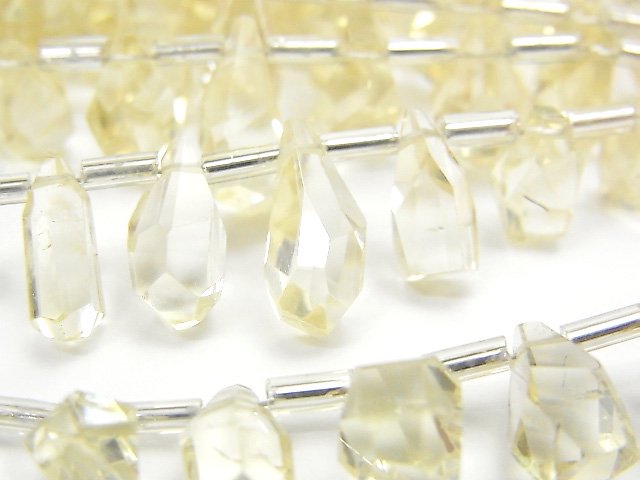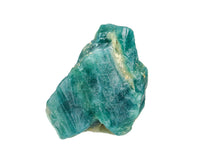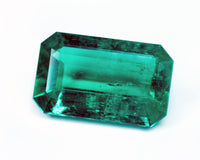- 1. Scapolite
- 2. The History and Meaning of Scapolite
- 3. Mineralogical Properties of Scapolite
- 4. Healing Properties of Scapolite
- 5. Metaphysical Properties of Scapolite
- 6. Scapolite for Sale
Scapolite
Scapolite is not as permanent as its congeners of the mineral world. Its composition has so many variations (and hence different properties and colors) that it makes your head spin. On the bright side, acquaintance with the stone brings lots of pleasant surprises.

The History and Meaning of Scapolite
The term scapolite has been known since 1800. It was proposed by Jose Bonifacio de Andrada e Silva, a Brazilian scholar and statesman, to designate a group of aluminosilicates. Interactions within this group produce solid solutions with different properties.
The name scapolite itself can be translated as a pillar, rod, or shaft, and it describes an elongated shape of crystals. As the unique properties of the mineral were studied, it received additional names for its varieties. Marialite was first described in 1866 by the German explorer Gerhard von Rath. He named the snow-white mineral after his wife Maria Rose. Meionite was discovered by the crystallographer René Gayuy. The name he gave to the new mineral means ‘smaller’ because its crystals are not as pointy as other minerals of the Scapolite series.
In fact, this mineral has many alternative names - algerite, ekebergite, nuttalite, fuscite, porcelain spar, etc. In addition, stones of certain colors and chemical compositions also received their own names.
Gem-quality scapolites weren’t found until 1913. Burma (Myanmar) became the first source of pink, white, and violet crystals suitable for cutting. Yellow specimens were discovered in Madagascar in 1920 and ten years later, in Brazil. Now scapolites of premium quality also come from Tanzania, Kenya, and Mozambique.

Mineralogical Properties of Scapolite
Scapolite is a mineral from the group of sodium and calcium aluminosilicates with a variable composition. Sodium scapolites are called marialite, and calcium varieties are known as meionite. The most common specimens have the features of both (i.e. they are of intermediate composition) and they are dubbed wernerites. In addition, there are varieties such as mizzonite and dipyr featuring various proportions of marialite and meionite. Regardless of their composition, cut gems have a glassy luster and hardness equal to 5.0-6.0 on the Mohs scale.
Scapolite is allochromatically colored, that is, it can have a wide spectrum of colors but they are typically slightly muted. A specific color depends on the origin of crystals. Scapolites found in volcanic rocks are usually colorless, while those formed in crystalline schists and limestones are opaque with gray, deep blue, and red colors. Marialites formed in pegmatites are pink, purple, light brown, or yellow; all of them have good transparency.
Depending on the color, the following types of minerals are distinguished:
• Glaucolite is marialite of blue color.
• Stroganovite has straw-yellow and gray-green hues.
• Petschite is a purple variety discovered in 1975 in East Africa.
• Sarcolite is a rare red or pink variety found in the volcanic deposits of Vesuvius.
• Ussingite offers various shades of purple, pink, and mauve. Besides that, its crystals can be colorless. This type of scapolite is mined in Greenland.
Some specimens of scapolite boast pleochroism due to their birefringence (double refraction). Different viewing angles, as well as different lighting conditions, reveal a new color of crystals. At the same time, you can come across specimens offering chatoyancy, i.e. the cat's eye effect. They display a narrow whitish streak that resembles an eye of a predator. This effect is a result of microscopic internal voids in the structure of the mineral. Asterism is one more desired optical phenomenon possessed by these stones. It is especially pronounced in cabochons. Such stones display a shimmering star that occurs due to tiny inclusions in the crystals.
To enhance the color of the stone, it is exposed to gamma rays. Moreover, irradiation is able to change coloration. For instance, yellow specimens can turn lilac, although bright sunlight can reverse the effect. If you put scapolite under ultraviolet light, you will see intense fluorescence in the yellow-orange range.

Healing Properties of Scapolite
In alternative medicine, scapolite is used to relieve headaches. Minerals of blue color can cure eye diseases such as cataracts and glaucoma.
Folk healers suggest that purple scapolites speed up recovery after surgery, heal wounds, and reduce inflammation. They are also able to improve the functioning of the circulatory system and eliminate congestion. Lithotherapists claim that this mineral is able to lower blood pressure.
Along with that, scapolites have a positive effect on diseases of the musculoskeletal system. In particular, they reinforce the spine, alleviate the symptoms of osteochondrosis, reduce pain in the limbs, and combat arthritis. You can also use the mineral to reduce the manifestations of allergies.
All types of scapolites are capable of neutralizing harmful radiation that comes from computer screens and mobile devices.

Metaphysical Properties of Scapolite
Esotericists claim that the magical abilities of scapolite are stemmed from its color. A blue stone promotes concentration and determination. It will become the best friend for those people who have a goal and a willing to achieve it. If you want to lose weight, save a certain amount of money, or graduate a college, you can rely on such a talisman. Please keep in mind that it won’t work for you. Instead, it will help make the most of your efforts as well as remove distractions. Scapolite is often called the stone of students as it patronizes people who have to absorb and process large amounts of information.
Yellow scapolites can help bring order to your finances. They don’t necessarily ensure prosperity but can try to improve your spending habits and reveal good opportunities to make money. Just like any gem of a warm color, this type of scapolite is associated with the sun and its energy. It will warm you when you need it, comfort, and give you the strength to overcome adversity.
Scapolite can be used for meditation and as a talisman protecting from negative impacts. The stone attracts well-being, health, as well as endows its owner with intuition.

Scapolite for Sale
You need a rare yet budget-friendly gem to craft fashionable jewelry or powerful amulets? The choice is obvious – scapolite. We scout around the world to deliver the best specimens at the best prices that meet all your needs. Whether you’re hunting down large individual scapolites, beads, or sets of stones, you can count on us. Our catalogs provide access to multiple cuts, shapes, and colors to help bring your creative vision to life. 



